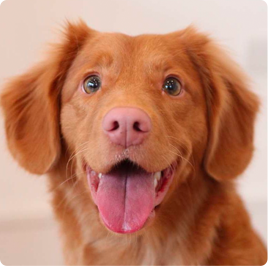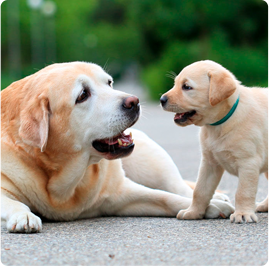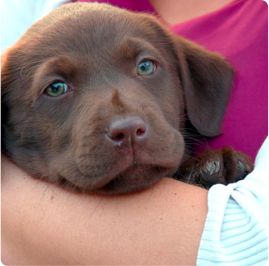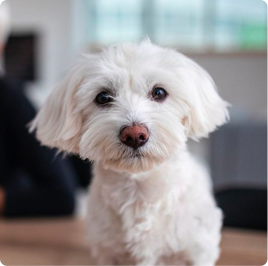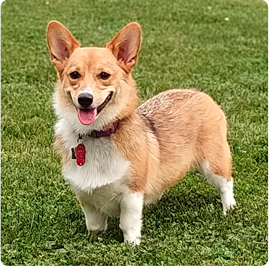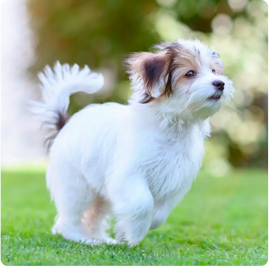Life With Your Dog: Keep Doing What You’re Doing But Make It Better
There’s a well-known saying that “A tired dog is an obedient dog.” And it’s true – a dog who gets exercise will be much less likely to be bored and find destructive ways to stay entertained. (I have a friend who doesn’t always walk her energetic Lab mix before work; he typically rewards her by chewing up a purse, shoe or once, Jenga blocks.)
But exercise isn’t the only way to tire a dog out – mental stimulation is also very important, according to Traci Moriarty, dog trainer and founder of Durango Dog College in Durango, Colo.
“We’re so good at exercising our dogs physically in this part of the world, but we do not use their brains enough,” she said.
So Moriarty and several experienced dog trainers from the team at Durango Dog College shared tips with PAW5 for easy ways to enrich daily activities for your dog, from daily walks and car rides to dog park visits and hanging out on the couch.
Dog park visits.
Moriarty is a huge fan of off-leash dog parks. She treats it like a party – you might not like every guest who’s invited, but that’s OK.
“Not every dog’s going to like every dog,” she said. “We don’t walk down the street hugging every person we meet, but we want our dog to like every dog, and that just doesn’t happen.”
So the key at dog parks is to keep moving.
“Don’t just go to the dog park and stand there – walk around,” she said. “That way there’s movement and if there is an issue – if you do bump into a dog that doesn’t like you – you can just keep moving forward.”
Moriarty said the dog park is “the best place” to practice recall – tell your dog to “Come,” reward him with a treat, and let him go back to playing with his canine pals.
“They’re being rewarded both ways,” she said.
Car rides.
Some dogs can’t wait to jump in the car and head off on an adventure. But others might be reluctant to get in the car because they get car sick. Trainer Liz Feazell’s poodle Dusty used to get carsick, so she had to find creative ways to get her in the car, such as:
- Give your dog something to chew on in the car, like a bully stick or a bone. They’ll be too engaged to care about the travel. (You can get them chewing before you even get in the car so they’re already interested in the treat.)
- Practice the “touch” command (if your dog touches her nose to your hand, she gets a treat) by putting your hand in the car and saying “touch.”
- If your dog likes to play fetch, throw a ball into the parked car, let her retrieve it and jump out and keep repeating. “Dusty’s so obsessed with fetch that then she didn’t even think anything of getting in the car.”
Feazell added that doggie seatbelts are always a good idea, and advises cracking the window enough that the dog can sniff the air while traveling, but not so much that she can stick her head out and have a flying object hit her eyes. Dogs who still don’t adapt to car travel might feel safer in a crate with a blanket covering it.
Leash walks.
There’s a lot more to a good leash walk than trying to get your dog to “heel.” Trainer Daisy Dickson said there are all kinds of commands you can practice on a walk to make it exciting for your dog, like “U-turn” and “Let’s go” or practicing passing other dogs. She advocates only using positive training methods – not jerking on the leash.
“Reward your dog with a clicker and treats for being where you want them to be,” she said while petting her pit bull, Isis. “She loves to go on a walk and is so nice on a leash.”
She’s quick to note obedience is just one aspect of a fun dog walk.
“Do a little bit of the training thing, remind them that you have treats and that a walk is not just exercise – a walk is training work and mental exercise – and then let them be a dog. Let them pee on things, let them smell things, because they’re going to listen to you better on a walk if they have the opportunity to be a dog.”
Environmental enrichment at home.
While trainer Jenni Berkman loves helping clients train their dogs for sports like agility and Frisbee, she said there are also fun games to play at home while practicing clicker training.
“One of the most fun games you can do from your couch with your dog is called 101 Things to Do with a Box,” Berkman said. “It’s pretty simple.”
- Introduce your dog to the clicker to the point where they’ve learned when they hear a click, they get a treat.
- Put a cardboard box of any size in the middle of the living room.
- Each time your dog looks at the box, faces the box, turns toward the box or does anything involving the box, click and treat. “You can even throw treats into the box so they figure out, ‘There’s something about this box that’s making this person click and I don’t know what it is.’”
- Your dog will start doing behaviors they’ve learned or that that haven’t learned, like pawing the box or nosing the box or kicking the box. Click any time they do something that you like or do something different.
- Keep moving the box so they don’t get bored.
“After a couple of times with this, you can figure out what your dog enjoys doing – do they like using their paws? Do they like to use their mouth? Are they vocal? You can see their brains turning trying to figure out how they’re going to get you to click. In 10 minutes, they’re panting and they’re worn out … it’s mental stimulation. It’s one of the best games.”
Feeding time.
Because of her emphasis on providing mental stimulation, Moriarty said she talks about interactive food toys like puzzle feeders in all of her classes at Durango Dog College. They also have the advantage of making the dog eat more slowly, which helps prevent the often fatal “bloat,” and engaging reluctant eaters.
“Every meal, let the dog think it’s their job by putting it in an interactive food toy,” she said.
As with any daily task your dog enjoys, she suggests making your dog sit nicely and “wait” before the reward of the meal.
By putting in just little extra effort, all of the little daily activities you already do can become richer, more fulfilling experiences for your dog.


